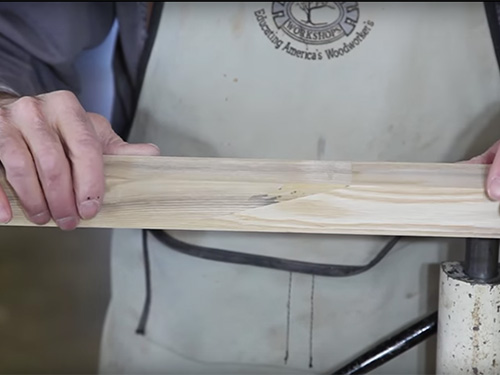
I am new to woodworking. What is a scarf joint?
Sandor Nagyszalanczy: A scarf joint is a long, tapered joint that’s used to form a strong connection between the ends of two long sticks or boards, to make a single, strong piece that’s even longer. There are two places you’ll commonly see scarf joints: One is in the crown molding that surrounds the wall-ceiling boundary of a large room. Single lengths of this fancy molding aren’t long enough to span the entire length of a big room, so two pieces of crown molding are joined with a scarf joint to make what looks like a single, contiguous piece. The other place you’ll see scarf joints is on boats. Vessels, such as sailboats, canoes, rowboats, etc., typically have a “cap” of wood on the top edge of the hull that runs from the front prow to the back stern. Some boats have other long, continuous strips on their cabins, or the outside of the hull, such as a gunnel, or gunwale (to keep waves and wake from splashing up into the boat). You’ll also see scarf-joined parts used in traditional Japanese house carpentry.
Scarf joints are cut by mitering a pair of complementary angles on the ends of the parts to be joined. For crown molding, where the strength of the joint isn’t much of an issue, these angles are the same 45 degree angles used in corner joints. For boat trim and carpentry applications, where joints need to be strong and secure, the miter angle is usually very acute: 30 degrees or less. This creates a big overlap between the parts, thus giving the joint lots of mechanical strength, as well a lot of gluing surface area.
Carol Reed: It is an angled butt joint. Cut complementary angles on the board ends to mate up. The more shallow the angle, the greater surface area to glue.






